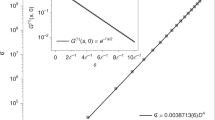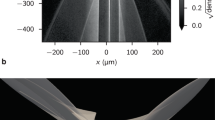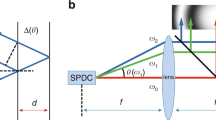Abstract
THE rate at which a collection of atoms is excited or de-excited by monochromatic light which has been split into distinct components by a half-silvered mirror, diffraction grating, or other means would ordinarily be expected to be proportional to the average intensity of the intercepted light. This would be true whether the atoms intercepted but a single component or several components of the light. The latter could be propagating in nearly the same direction or could arrive from quite different directions.
This is a preview of subscription content, access via your institution
Access options
Subscribe to this journal
Receive 51 print issues and online access
$199.00 per year
only $3.90 per issue
Buy this article
- Purchase on Springer Link
- Instant access to full article PDF
Prices may be subject to local taxes which are calculated during checkout
Similar content being viewed by others
References
For quantitative expressions, see White, J. A., App. Phys. Letters, 3, 107 (1963).
White, J. A., Bull. Amer. Phys. Soc., 8, 530 (1963).
Szöke, A., and Javan, A., Phys. Rev. Letters, 10, 521 (1963). This decrease in output as the laser is tuned to the atomic resonance was first predicted by Lamb, jun., W. E. ; cf. the note by McFarlane, R. A., Bennett, jun., W. R., and Lamb, jun., W. E., App. Phys. Letters, 2, 189 (1963).
Author information
Authors and Affiliations
Rights and permissions
About this article
Cite this article
WHITE, J. An Implication for Lasers of an Aspect of Interference at High Field Strengths. Nature 201, 911–912 (1964). https://doi.org/10.1038/201911a0
Issue Date:
DOI: https://doi.org/10.1038/201911a0
This article is cited by
-
Laser saturation grating phenomena
Applied physics (1976)
Comments
By submitting a comment you agree to abide by our Terms and Community Guidelines. If you find something abusive or that does not comply with our terms or guidelines please flag it as inappropriate.



